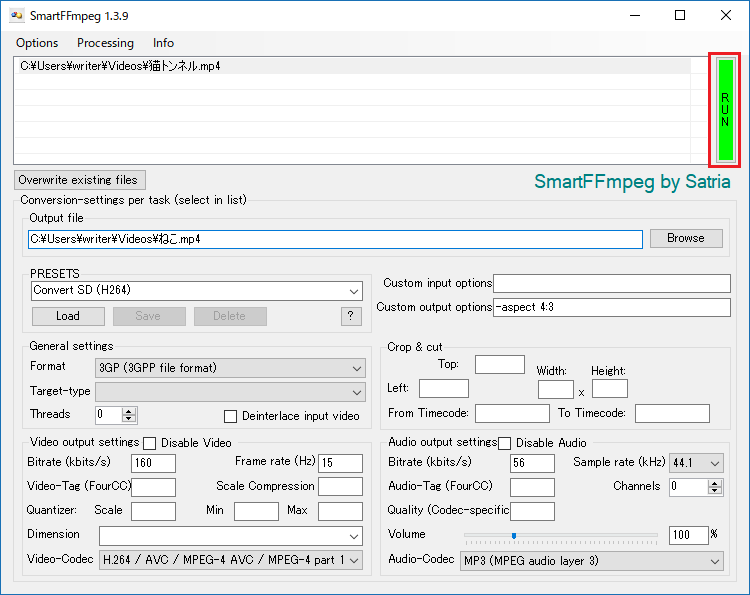
You can specify the -qscale 0 parameter before the output file to preserve the quality of a video file: ffmpeg -i video_input.wav -qscale 0 video_output.mp4Īdditionally, you could specify codecs you want to use, adding -c:a (for audio) and -c:v (for video) followed by the name of the codecs, or copy if you want to use the same codecs as the original file: ffmpeg -i video_input.mp4 -c:v copy -c:a libvorbis video_output.avi To see a list of all supported formats, use: ffmpeg -formatsĪgain, you can add -hide_banner to omit information about the app. This will convert the input files to all specified formats. You can even specify more output files: ffmpeg -i audio_input.wav audio_output_1.mp3 audio_output_2.ogg Here are some examples: ffmpeg -i video_input.mp4 video_output.aviįfmpeg -i video_input.webm video_output.flvįfmpeg -i audio_input.mp3 audio_output.oggįfmpeg -i audio_input.wav audio_output.flac This works for video-to-video and audio-to-audio conversions. You only have to specify input and output files, since ffmpeg will get the required format from the file extensions. Convert Media FilesĪnother very useful way to use ffmpeg is for hassle-free conversion between different media formats. You can also use the same name for both an input and an output file, but you’ll have to add the -y tag before the output file name.ĭisplay info of a media file using ffmpegĪs you can see, the command now outputs only details concerning the media file you specified (encoder, streams etc.). Ffmpeg uses as many inputs and outputs as you provide.

You have to keep in mind that all file options apply only to the file that follows them (you’ll have to write them again for the next file).Īny file not preceded by -i is considered an output file. The basic form a ffmpeg command is: ffmpeg. With ffmpeg installed, I’ll go over basic commands to get you started using this powerful tool.
#Ffmpeg gui download how to#
To install ffmpeg in Fedora-based Linux distributions, you can use this command: sudo dnf install ffmpeg How to use ffmpeg: The Basics To install ffmpeg in Arch-based distributions, use the following command: sudo pacman -S ffmpeg Install ffmpeg in Fedora-based distributions Sudo apt install ffmpeg -y Install ffmpeg in Arch-based distributions Simply use these commands: sudo add-apt-repository ppa:jonathonf/ffmpeg-4

There is an unofficial PPA that you can use to install the latest ffmpeg release. If you have any suggestions, tips or corrections, let me know in the comments! Note: Although I’ve researched ffmpeg thoroughly and tested everything I’ll mention in this article, I don’t edit videos (or other media) on a daily basis. I’ll be using Ubuntu 18.04, but these commands should work for other distributions too.

I’ll be explaining everything in detail so you can understand what is going on even if you are new to the Linux world. I’ll even get into some more complex features. In this ffmpeg tutorial, I’ll show you how to install ffmpeg and I’ll be covering it’s different uses. However, it’s a very powerful program that can be used in more complex ways and even replace an editing workflow. What I love even more about ffmpeg is that it can be used on it’s own to accomplish many processing tasks in a very simple manner (with one or two commands). A number of Linux video editors use ffmpeg underneath the GUI.

It is a framework with a multitude of features and, because of it’s open source license, it is the base for many widespread apps such as VLC, YouTube, iTunes and many more. It also demonstrates some useful ffmpeg commands for practical usage.įfmpeg is a CLI (command line based) utility for processing media files. Brief: This detailed guide shows how to install ffmpeg in Ubuntu and other Linux distributions.


 0 kommentar(er)
0 kommentar(er)
